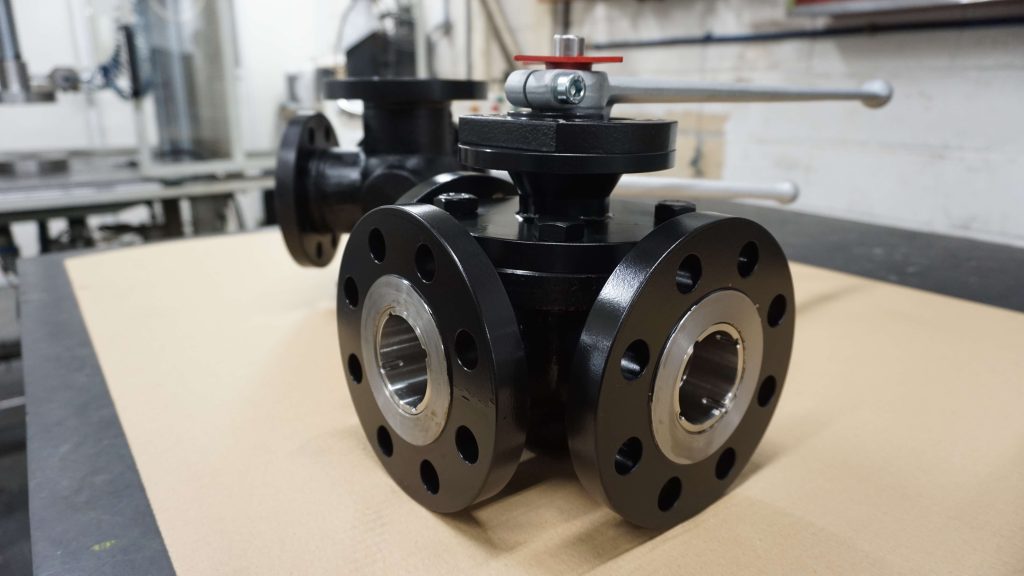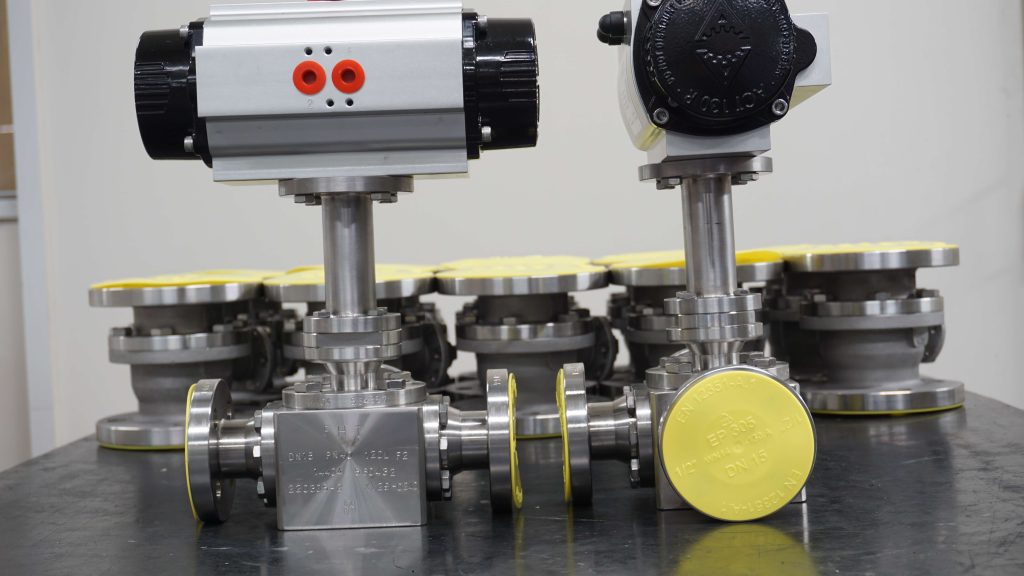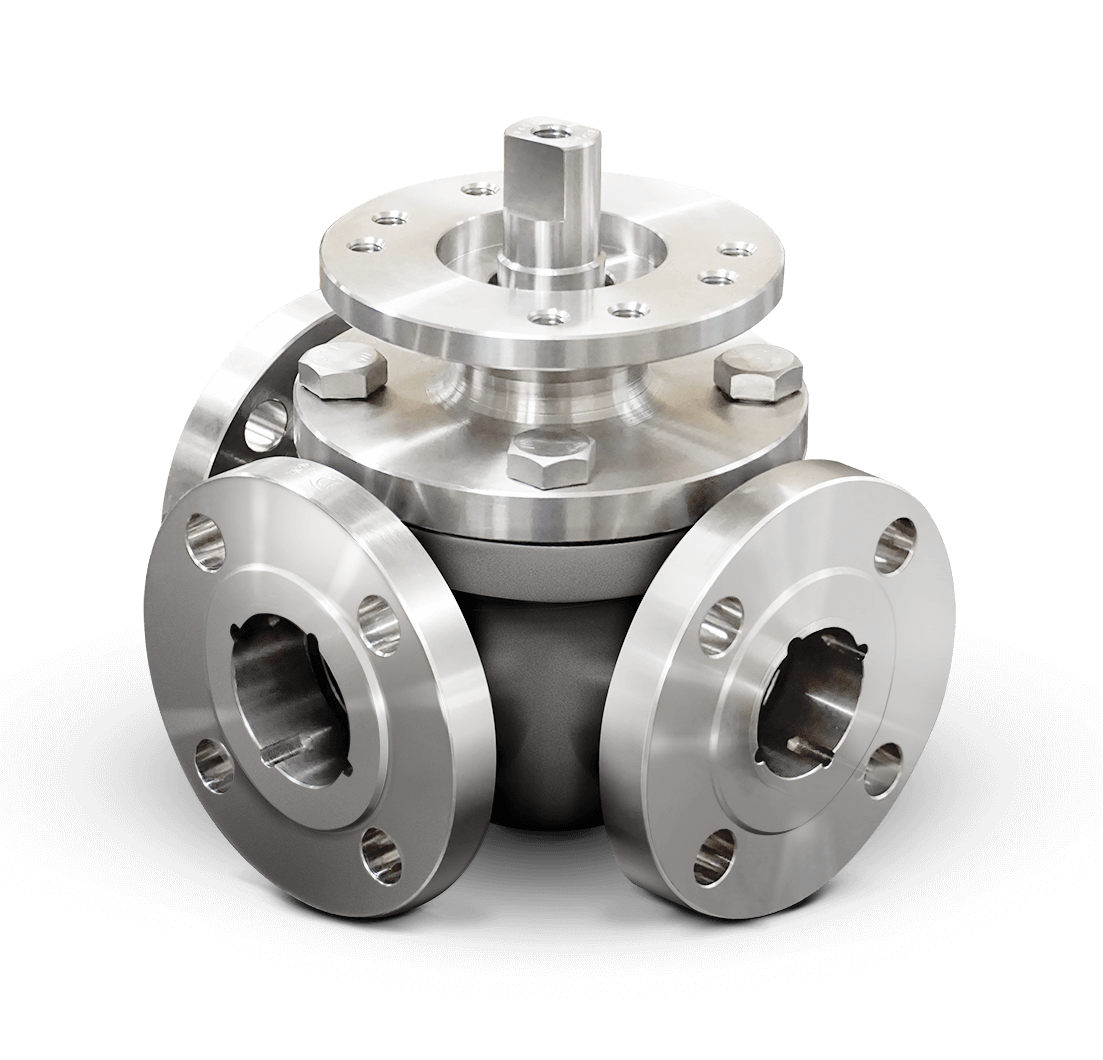In the world of industry and engineering, there are a wide variety of valves used to regulate the flow of liquids or gases in piping systems. One of the most versatile and popular options are 3-way ball valves. These valves are key components in gas pipeline systems, oil pipelines, chemical engineering, industrial processes and many other applications.
In this article, we will explore in detail what 3-way ball valves are and what their main functions are. We will start by explaining their basic design and operation, and then delve into the different ways in which they are used in various applications.
Throughout the article, we will discover how 3-way ball valves allow the selection and diversion of media flow in multiple directions, and how their modular structure and efficient design make them a reliable and cost-effective choice for many industries.
If you want to learn more about these essential valves and their pivotal role in piping systems, read on to discover the key functions and advantages offered by 3-way ball valves.
What is a 3-way ball valve
3-way ball valves are devices used in piping systems to control and regulate the flow of liquids or gases in multiple directions. Their design consists of a ball with a hole in the centre that rotates inside a valve body. This ball has three orifices, allowing flow in different directions depending on the position in which it is located.
These valves are especially useful when you need to change the direction of flow or combine different fluid streams. Their operation is simple: by turning the valve lever or handwheel, the ball moves and the orifices align with different conduits, allowing or blocking the passage of the fluid.
3-way ball valves are used in a wide variety of applications. In air conditioning systems, for example, they can direct the flow of hot or cold water to different areas of a building. In the chemical industry, they are used to mix different products or redirect the flow to different processes.
In addition to their versatility, these valves offer several advantages. Their compact and efficient design allows for easy installation and maintenance. They also provide a tight seal, preventing leakage and ensuring precise flow control. Some 3-way ball valves even include additional features, such as a locking lever or visual position indicators.
3-way ball valves are essential components in piping systems that allow the control and direction of the flow of liquids or gases. Their versatile design and ability to change flow direction make them a popular choice in a variety of industries.

Steps of a 3-way ball valve
3-way ball valves are distinguished by their two main types of passage: L- port and T- port. Each of these passages has specific characteristics and applications.
We will explore the steps of a 3-way ball valve in detail, focusing on the L- port and the T- port. We will look at how they work, what their structure is and how they are used in different situations.
L-passage
3-way ball valves with the L- port type have specific features and applications that make them ideal for certain scenarios. Here are some of their main features and uses:
Features:
- Direction of flow: The L- port allows the fluid flow to be redirected in one direction or the other. The valve ball has a central orifice that aligns with one of the two inlet/outlet orifices, allowing flow in a specific direction.
- Versatility: These valves offer versatility in flow control by allowing the flow to be adjusted through different combinations of opening and closing the inlet/outlet ports.
- Hermetic sealing: 3-way ball valves with L-port guarantee hermetic sealing when closed, preventing leakage and ensuring precise flow control.
Applications:
- Air conditioning systems: These valves are used in air conditioning systems to control the flow of hot and cold water. They allow directing the flow to different zones or switching between heating and cooling modes.
- Industrial processes: In industry, they are used in processes where mixing of different liquids is required. The L- port allows fluid streams to be combined in specific proportions, which is useful in the manufacture of chemicals, pharmaceuticals and foodstuffs.
- Fluid distribution systems: 3-way ball valves with L- port are also used in fluid distribution systems, such as in the selection of different water sources in a facility or in flow control in irrigation systems.
3-Way L-Port ball valves offer versatile and precise flow direction and control. Their ability to redirect flow makes them an ideal choice for applications such as HVAC systems, industrial processes and fluid distribution systems.

T- port
The 3-way ball valves with the T- port type have specific features that make them suitable for various applications.
Characteristics:
- T-Port Design: These valves feature a “T” shaped orifice in the inner ball, which allows two fluid streams to be combined in a single conduit.
- Versatility: The T-Port allows mixing of fluids, either to combine different liquids or gases, or to generate a specific mixture.
- Precise flow control: 3-way ball valves with T- port offer precise control over the amount and proportion of fluids being mixed.
- Hermetic sealing: These valves provide a tight seal when closed, preventing leakage and ensuring system safety and efficiency.
Specific applications:
- Hot and cold water systems: These valves are used in residential, commercial and industrial plumbing systems to combine hot and cold water streams, allowing a controlled and balanced supply of water to different points of use.
- Chemical and pharmaceutical processes: In the chemical and pharmaceutical industry, they are used to mix different chemicals and control the proportion of each component in the process.
- Heating and cooling systems: These valves are used to mix the flow of hot and cold water in heating and cooling systems, allowing to maintain a controlled temperature in different areas or zones of a building.
- Industrial processes: In various industrial applications, such as food and beverage manufacturing, petrochemical industry and chemical production, 3-way t-port ball valves are used to control and regulate the flow of liquids and gases at different stages of the process.
3-way ball valves with the T- port type are ideal for mixing and blending fluids in piping systems. Their versatility and precise flow control make them indispensable in applications requiring specific mixing, such as water systems, chemical processing and heating/cooling.
3-Way Ball Valves Catalogue at FHT Valves
At FHT Valves, we are proud to present our extensive portfolio of 3-way ball valves, designed to meet the most demanding piping system needs. Whether you are looking to control flow, change direction or combine different fluid streams, our 3-way ball valves offer reliable and efficient solutions.
Our portfolio features a wide variety of options, from 3-way ball valves with L-bore to those with T-bore, providing exceptional flexibility in terms of applications and functionalities. Each of our valves is manufactured with high quality materials and undergoes rigorous quality testing to ensure performance and durability.
At FHT Valves, we are committed to providing quality products and excellent customer service. Our team of experts is ready to advise you and help you find the right 3-way ball valve for your specific project.
Don’t waste your time, discover our 3-way FHT ball valves catalogue and trust our experience and commitment to meet your flow control needs in piping systems.

